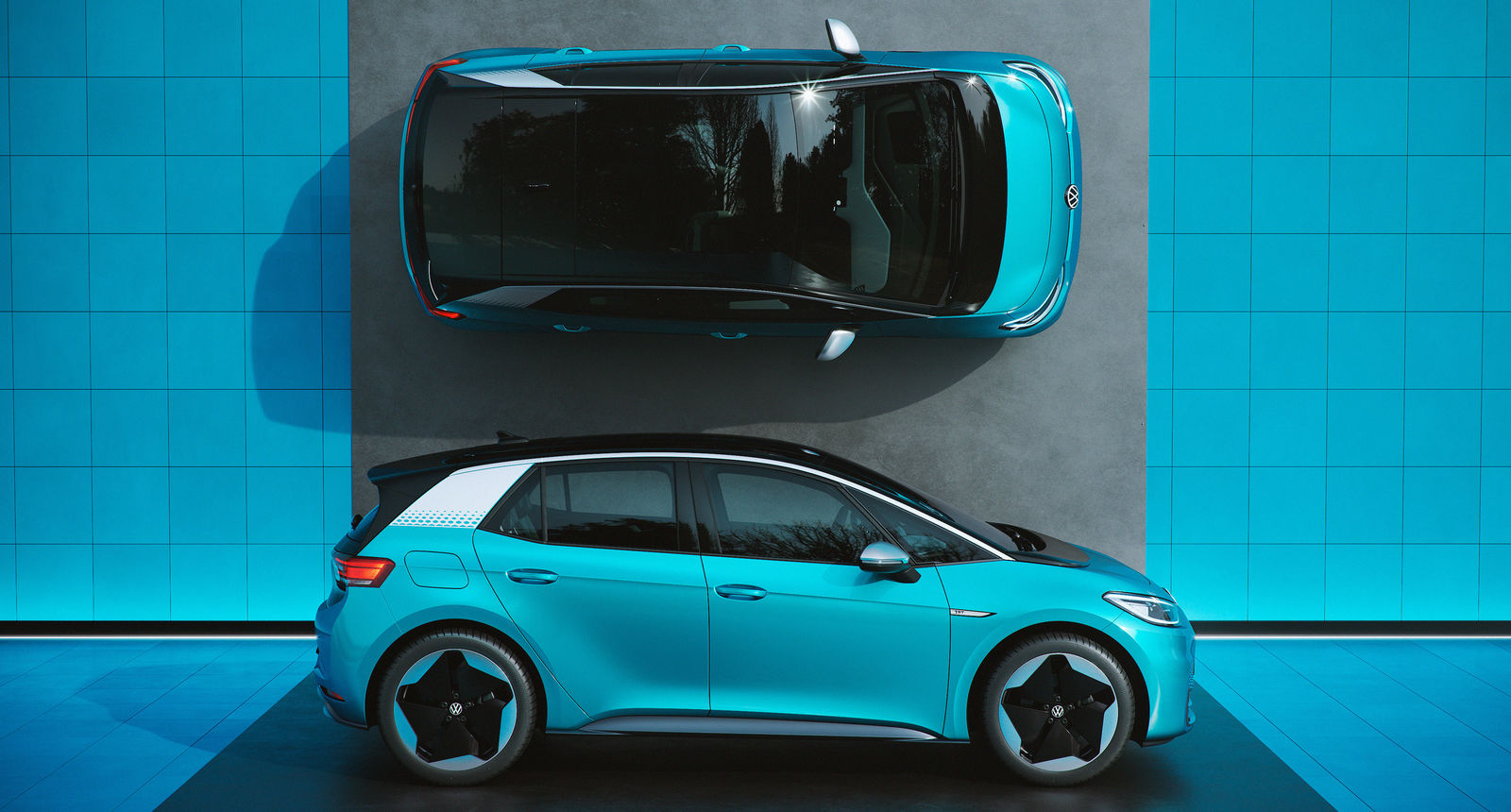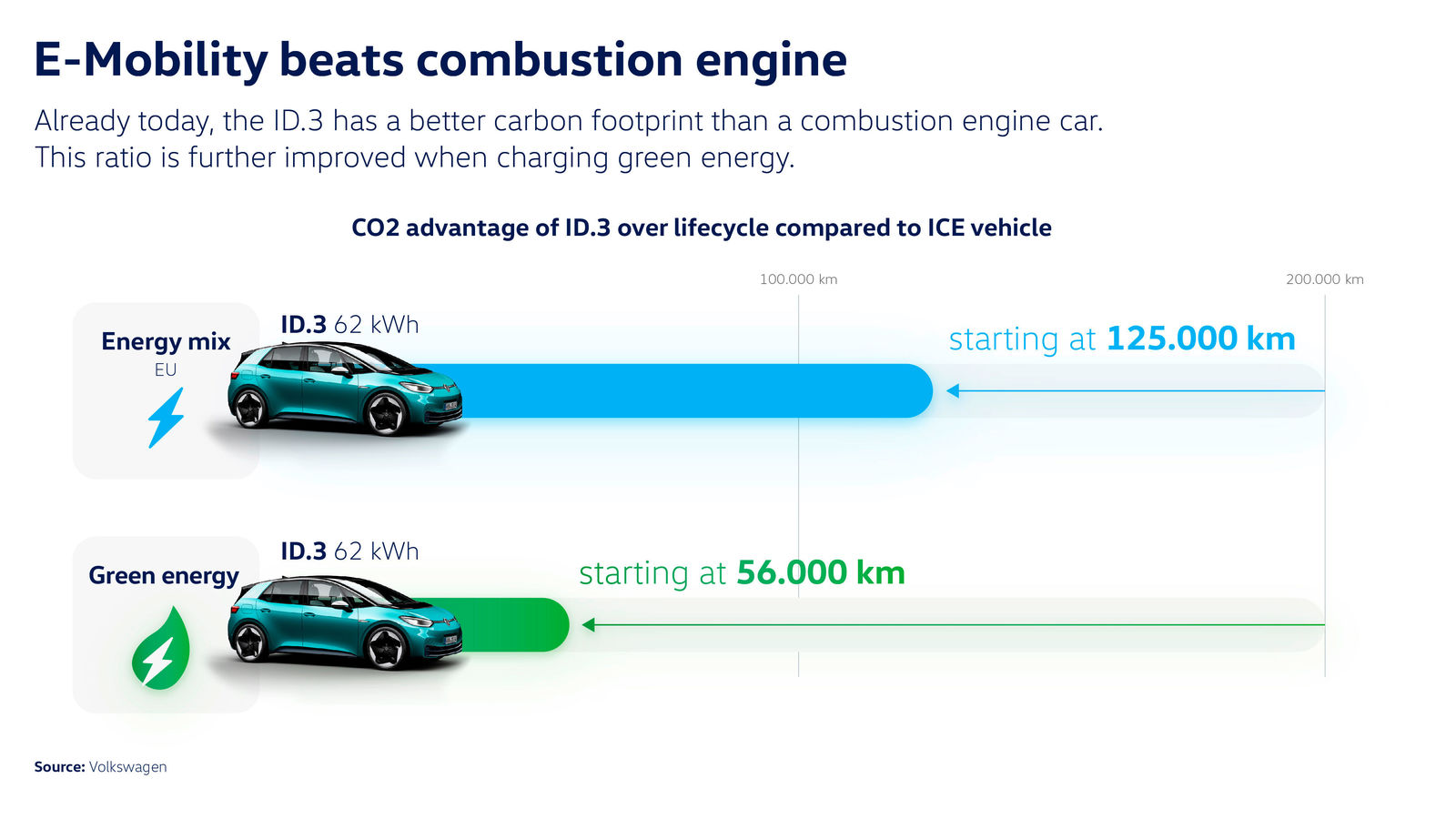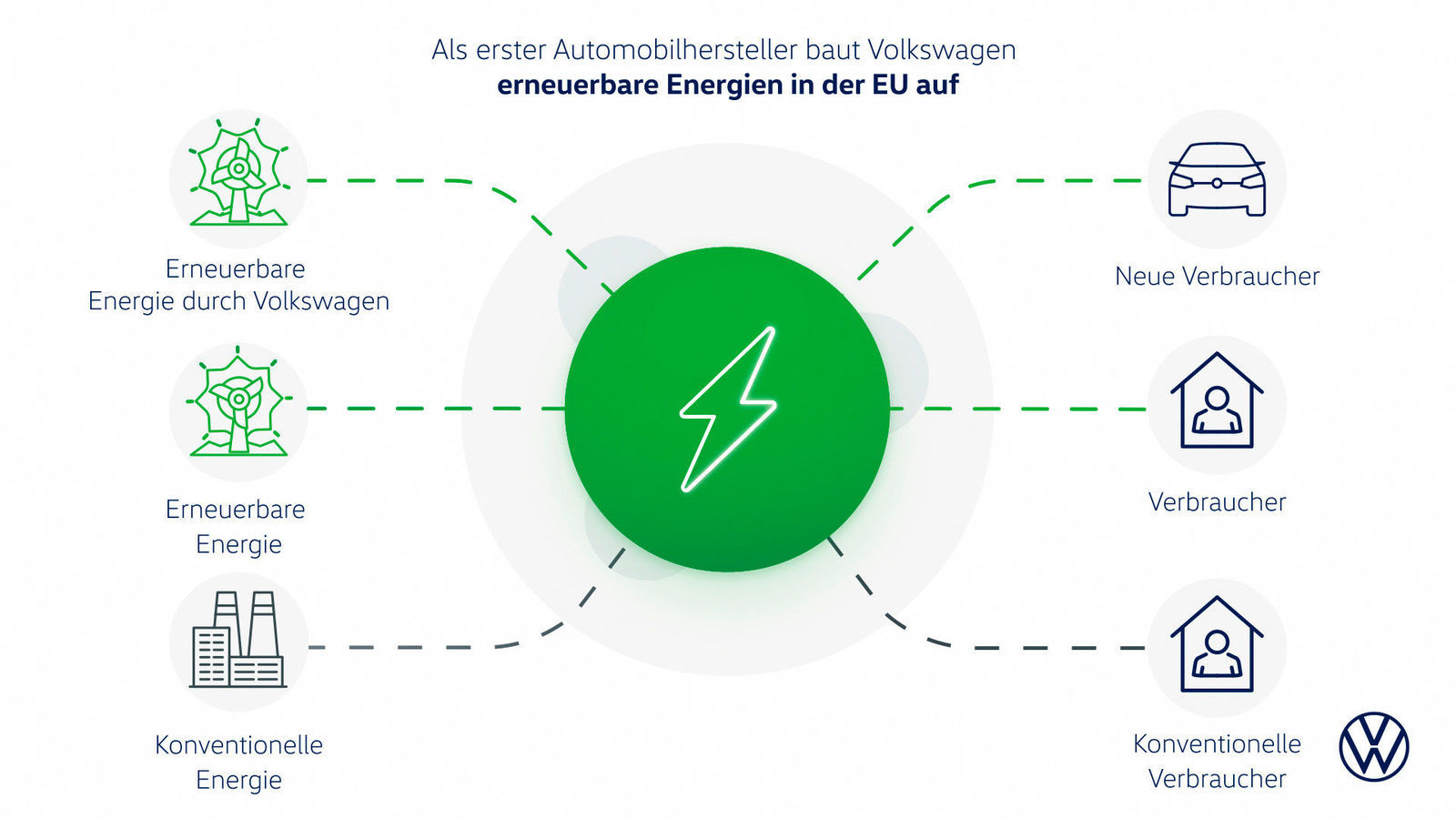All-green electric: The ID. Family goes carbon-neutral
Volkswagen has committed itself to the Paris climate agreement. Which is why the company delivers ID. Family vehicles to customers with a carbon-neutral balance. In order that electric vehicles remain carbon-neutral during their usage phase, they must be charged with green electricity. To ensure that this is in good supply, Volkswagen supports investments in the generation of additional green electricity.
Sustainable electric mobility begins at the socket
Charging opportunities at home and on the road
The approach: Volkswagen is assuming responsibility for making additional green electricity available. The onus is on drivers to charge their ID. vehicles with green electricity where possible. There are currently a variety of charging scenarios that already provide clean solutions: for example, the TÜV Nord (German technical inspection body) certified Volkswagen Naturstrom® from subsidiary Elli, which supplies green electricity for the home filling station. But many charging stations such as the high-power stations of the premium partner IONITY offer green electricity throughout Germany.
First green electricity project launches in 2022
There is as yet no blanket coverage where green electricity is concerned. Although Volkswagen assumes that 60 percent of electricity needed for charging is already supplied by renewable energies, it estimates that around 7 terawatt hours (TWh) of green electricity will be required by 2025 to power the ID. Family, among others. To secure additional capacities in wind and solar farms, Volkswagen is working together with the energy industry and financing projects for generating additional green electricity. The first project of this kind involves a photovoltaic power plant in Germany with a total annual capacity of 170 million kilowatt hours. The facility is being realised as Germany’s currently largest independent solar project in Tramm-Göthen in Mecklenburg-Vorpommern, which does not receive any subsidies. Once the power plant is up and running at the end of 2021, a total of almost 420,000 modules will convert sunlight into electricity.
Media


